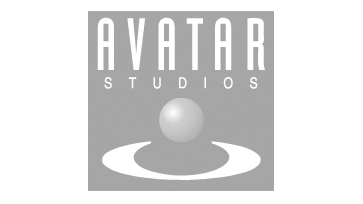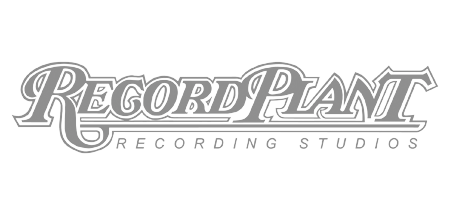ANALOG & DIGITAL PROCESSING:
FINDING THE OPTIMAL BLEND
Analog and digital gear have different sonic qualities. And even though you can create a professional master by using digital processing only, you may benefit from including analog units in your processing chain as well. Alternatively, you can use different plugins to bring that analog flavor to your master. Read on to learn how you find the optimal blend of analog and digital processing.
The arguments for using digital technology in the mixing and mastering process are many: It doesn’t add noise/hum, or coloration of the sound; It is flexible and often software-based; It results in cheaper entry-level prices; it gives you many more possibilities (such as presets) and you can collaborate with other musicians all around the world.
When you put it like that, analog equipment doesn’t sound like the obvious choice for modern-day audio processing. Then why is it still seen in studios today? It’s all about that elusive warm sound. Let’s dive into that…

Warmth: Metaphorically speaking
Ask 10 different musicians about their gear and why they’re using it. They’ll give you vastly different answers, but statistically the words warm/warmth are bound to come up 9/10 times: “It just gives a nice warm sound, man…”
It’s a positive metaphor to use in relation to sound – in relation to anything, really. And the opposite of a warm sound (a cold sound), is something that no one in their right mind would be pursuing. You’ll never hear a guitarist praise his vintage amp for its brilliantly chilly sound.
But what does warmth mean?
What we’ve come to know as analog warmth in mixing and mastering is actually a result of technical imperfections from an engineering point of view. Old transformers and vacuum tubes weren’t designed to create harmonic saturation – that was just a byproduct of their primary function, which was to increase volume or roll off frequencies (and so on). Analog preamps, equalizers and compressors would inevitably leave behind sonic traces in the processed sound, such as harmonic distortion, weaker transient sounds and an overall non-linear frequency response.
But along the way, some of these technical imperfections became indispensable tools for mixing and mastering engineers, who used them to manipulate the sound. For example, the analog equipment’s lower sensitivity to transient sounds meant that the tracks could be compressed more, without going into clipping or unwanted distortion. That translated into hotter (louder sounding) records. Excellent!
Engineers quickly discovered that their compressors, limiters and equalizers had sweet-spots where the harmonic distortion sounded best. Tubes started to ‘sing’ at certain voltages and transistors could enhance the low-end response when they were pressed hard enough.
The equipment that was meant to create faithful reproductions of sound gradually altered the sound in such recognizable ways, that it would eventually be used as an effect in itself. With time, our ears grew used to that particular sonic aesthetic, for some genres of music. To the warmth.

Analog vs. Digital Processing
A lot of beginners will ask: Is it best to use analog or digital tools in a mastering session? But it’s counterproductive to phrase the question like that. What everyone should ask themselves is: How do I find the optimal blend between analog and digital processing in my mastering session?
To answer that question, we’ll first go through some relevant topics that will give you a broader understanding of the tools and techniques that mastering engineers often use.
Transient Clipping Within the Analog Domain
This may sound a little complicated, but it’s actually pretty straightforward. Even in a well-produced mix, the transient peaks are somewhat out of control and need to be reduced before it is given to the listener at home. This is often accomplished by using peak limiting within the digital domain (DAW, digital processor or standalone application).
But as a first step, many mastering engineers use peak clipping in analog-style equipment, such as reel-to-reel tape decks. They do this by sending the signal through an analog device at high levels. When the transient peaks reach a certain level, they’re clipped in a way that isn’t very noticeable, which allow the engineers to work louder levels. This ‘soft clipping’ happens instantaneously – because there are no attack and release parameters at play.
Tape-recorder: Adding tape-saturation
In the old days, music was recorded to magnetic tape with tape heads. These reel-to-reel systems varied in speed all the time – not a lot, but enough to create the flutter-y sound associated with tape. Flutter is essentially a mixture of the resulting small pitch variations, irregular phase changes and harmonic distortion (soft clipping). Together with the noise floor inevitably added, a round-trip to tape can be described as a warm and hazy sound.
Even today, when mastering engineers have an abundance of digital tools at their disposal, some choose to use actual tape-recorders to add the subtle sound of tape saturation to the track. They simply record the signal to a reel-to-reel machine and then feed it back into their console/DAW for further processing. Perhaps you should give it a try? Just keep in mind that such analog gear may not be a one-off cost, as a reel-to-reel tape machine needs maintenance, cleaning and calibration every now and then.
Analog equalizers: Perfectly imperfect
As mentioned, all analog equipment is imperfect from a strictly engineering point of view. Maybe you find that statement controversial – maybe even offensive. But we’re not saying that analog equipment is worse than digital equipment. We’re simply saying that there’s some coloration going on when you’re using analog processing. That’s a fact. Whether that coloration enhances your track is up to you to decide.
If you’re using an analog equalizer that will add a little color (and noise) to the track too. Yes, even EQs have an inherent sound – and some will even operate differently tomorrow than they did yesterday, simply because of temperature changes! To some this is an inconvenience. To others it’s what adds ‘life’ to their project.
Many analog equalizers have a very distinctive sound. If you find one that has exactly the tone you’re looking for, it could be a good investment.
Analog compressors: Optical, VCA and FET
Mastering programs (such as Finalizer) have multiple compressor options. Some of them are based on time-proven analog circuits. But if you like the idea of adding compression via an analog unit, there are three main types you should know about.
Optical compressors use a light source and a photocell or a light dependent resistor to obtain a compression effect. The device converts the incoming signal into light, and the beam is then detected by the photocell or the resistor (LDR). Optical compressors have a nice smooth reaction but are not optimal if you’re looking for a fast attack.
VCA (Voltage Controlled Amplifier) compressors determine the attenuation by detecting the incoming signal’s voltage. They are as common as they are versatile and can handle both slow and fast attack time.
FET (Field Effect Transistor) compressors seek to emulate a tube circuitry although they are transistor based. They can have a really nice and warm sound, but they are typically more noisy than optical and VCA compressors.
No matter what analog compressor you’re using, it will add its own characteristic sound to the master. And you can use it anywhere in the chain (except after the limiter), but often such devices are used to first ‘add character’ to the sound, followed by a digital chain to take care of the finer adjustments.
Digital simulations of analog equipment
But what if you like the price and flexibility of digital technologies, yet want that characteristic analog sound? Then you’re lucky, because digital technologies have become very sophisticated.
Analog limiters that cost more than a car are now available as affordable plug-ins for your DAW of choice. They often don’t sound exactly the same, but it’s hard to justify selling your car to get the real deal. Due to variations in the analog devices, even two seemingly identical units often do not sound exactly the same.
You can get analog doubling (ADT), vintage EQs, tube-preamplifiers and many more fabled analog tools in plug-in formats. They’re all trying to emulate the imperfections associated with analog equipment.

Digital Flexibility
No matter if you use analog or digital mastering tools, digital tools are infinitely more flexible – and often much cheaper. You can change the dynamics in more fundamental ways, you can remove noise effectively and you can sculpt the stereo image to perfection. Add to that the possibilities offered by advanced metering tools providing valuable visual feedback. There are tons of reasons to use digital mastering technology, whether it’s in the form of rack mounted units, metering displays, plug-ins or standalone applications.
When you use digital tools you also free yourself from a lot of inconvenience. There’s no such thing as a preset on an analog console. If you want to recall where the faders and knobs were a couple of minutes ago, you have to use tape and markers. Or you can take a picture of the settings, if you remember to. With digital presets the sky is the limit. You can quickly switch back and forth between existing settings and new ones – and even compare them with mastering sessions carried out by other musicians.
Digital solutions also have the bonus of libraries, where you can import settings based on genre (rock, pop, classical, country, jazz and so on) or application (podcast, speech, commercial, etc.)
This means that the learning-curve isn’t that steep: You’ll be able to get well-mastered song without reading a manual the size of a Tolstoy novel.
All in all, it’s fair to say that recording and processing music has become democratized. You no longer need a comprehensive knowledge or lots of money to produce your own music.

The Loudness War
Our walkthrough of the digital mastering world would be incomplete if we left out the loudness war. Perhaps you’ve heard of it. But we’re completely sure you’ve heard the consequences of it!
You know that moment when your favorite TV-show takes a short break and the commercials set in? The commercials are so loud, aren’t they? Well, if you measured the sample-peak level, it might tell you it’s the same level as the TV-show you’re waiting for to come back. Yet it sounds louder.
It’s because many producers and mastering engineers have found it necessary (either by their own free will or due to pressure from their company or clients) to hyper-compress the sound so it’ll appear louder.
And this phenomenon is not limited to TV-commercials and CDs. It’s now everywhere. On streaming services, in the radio and on social media platforms.
But how did this start?
Since the early days of mastering, the engineers had the task of making records sound hotter. But there was a natural limit to how hot a record could get, before a record player’s needle would be unable to track the record. Some records were too hot to handle, so to speak.
When the CD-format appeared in the mid-80s, however, there were no longer any boundaries to how compressed a track could get because CD-players didn’t have the same physical limitations. Limitations on bass and treble energy were also gone. So in the 1990’s, some mastering engineers began experimenting to see how far compression and limiting could be taken. They went too far. And had huge success with it.
You see, digital processing can change dynamics in more drastic ways than analog processing can. With digital technology you can squeeze a track infinitely. And when artists and music labels got the idea that the heavily compressed releases were more popular than the quitter sounding (but more dynamic) ones, they began requesting that the engineers add more compression and pressed the limiters harder.
The downside to mastering with loudness as the main objective is that you’ll eventually cross into hyper-compression territory. That’s the point when you actually damage the music in order to make it sound louder. The track begins to sound distorted and feel claustrophobic.
During the late 1990s the dynamic range of popular music decreased as the loudness levels went up. Every new record sounded louder than the last, it seemed. It was almost as if the music industry was in a race towards sounding the loudest. But the music suffered from it.
What started out as a way of making a piece of music stand out in the crowd has paved the way for a malpractice in the world of (primarily) pop and roc music production. Of course, some young listeners have already grown accustomed to the hyper-compressed aesthetic, often played through the limited speakers of their laptop, and thinks of it as the sound of the 21st century.
But no ears – no matter how young – can escape the phenomenon known as sonic fatigue: This is when longer exposures to hyper-compressed music makes your ears ‘tune out’. You stop really listening. When this happens, the music becomes mere ambience – an arbitrary backdrop to whatever else you’re doing.
This could be one of the reasons why record-players have been regaining popularity. As mentioned, there’s a boundary to how hot records can be. As a consequence, the corresponding LP to a hyper-compressed album will be mastered in a less-compressed, more dynamic way. The medium itself is a gatekeeper for a better listening experience.
The solution to the loudness war
Of course, record-players aren’t the solution to the loudness war. But what is, then?
Using compression and limiting moderately – and for artistic reasons, not for loudness.
You’ll become better at mastering all the time. And one of the things you’ll learn to detect is that every track has its natural loudness limit: A point where it can not be compressed more without damaging the sound. If all mastering engineers could and would stay within this limit, there would be no loudness war. A great place to get an indication of whether you’re about to reach the limit is to upload your master to our free online Analyzer on finalizer.com.
But as is the case with all occupations, some turn to ‘the dark side’. Just don’t let that be you.














